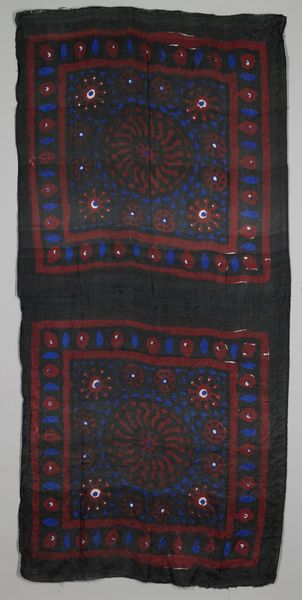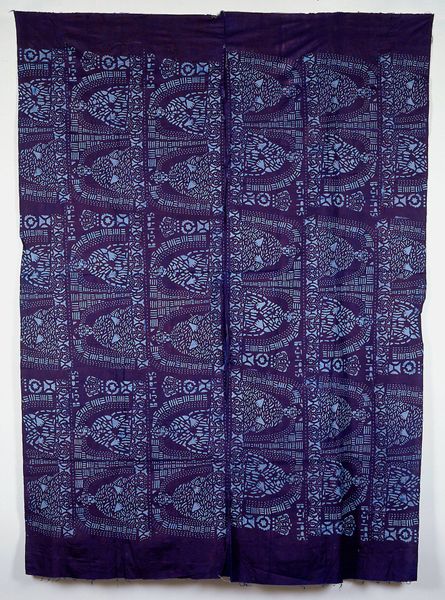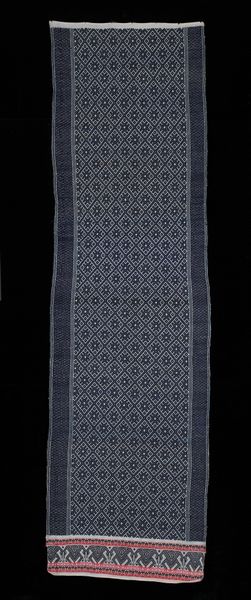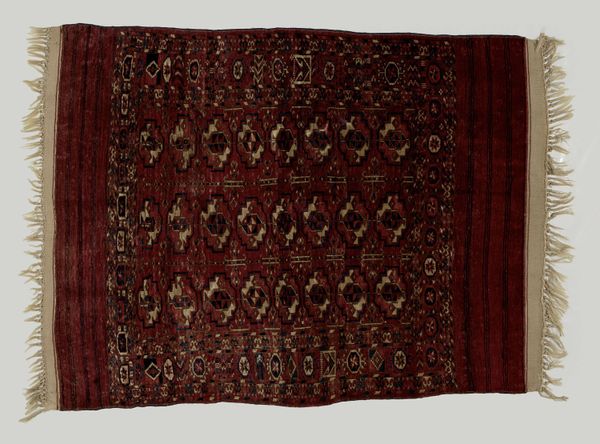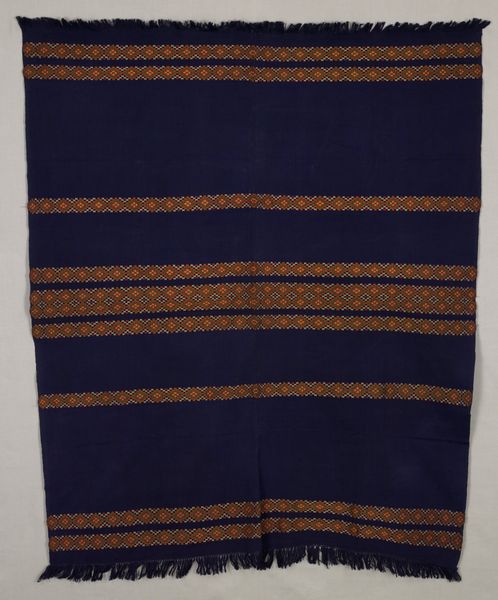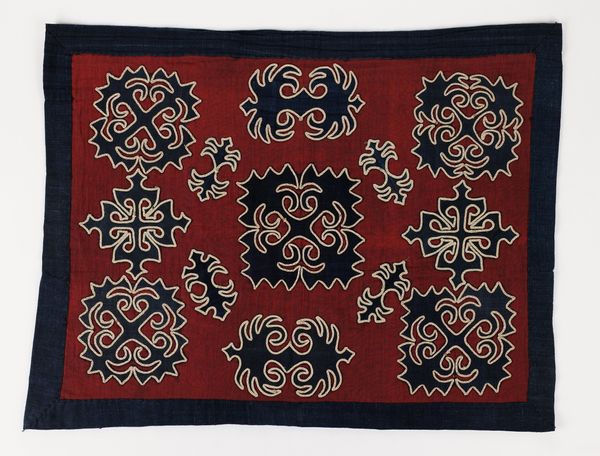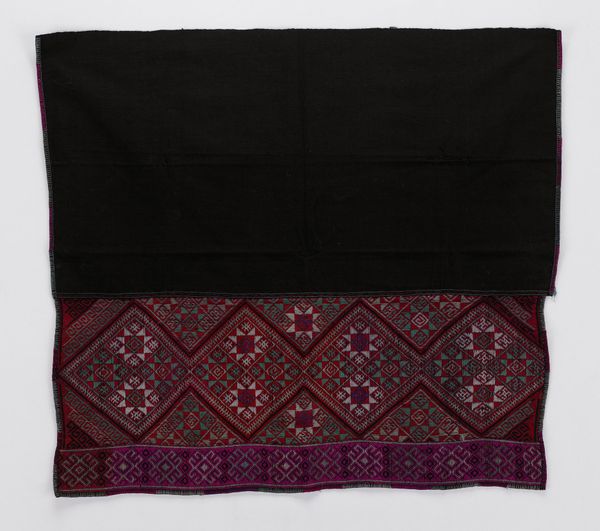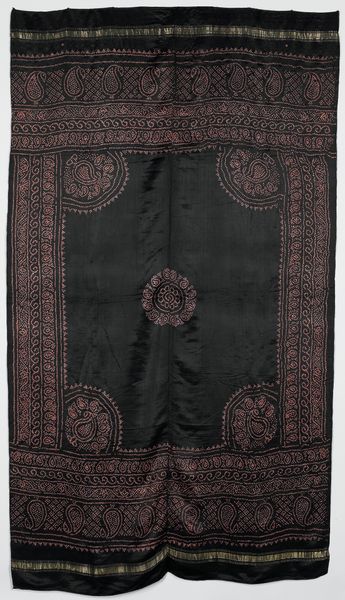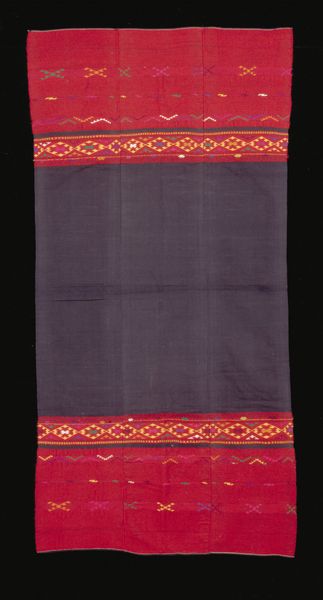
textile, cotton
#
pattern
#
textile
#
cotton
#
textile design
Dimensions: 41 x 46 1/4 in. (104.14 x 117.48 cm) (irregular, without fringe)
Copyright: No Known Copyright
Curator: At first glance, this cloth strikes me with its simple elegance—the deep indigo offset by these geometric resist patterns. What are your initial thoughts? Editor: Materially, the simplicity is compelling. The "Woman's Wrapper," made from cotton, feels direct, revealing a tactile relationship between maker and material, especially given it dates to around the 20th century. Curator: Indeed. Let's consider the design itself. Each motif appears to be composed of clustered diamonds, often three, arranged almost like simplified floral or cosmological diagrams. Perhaps mirroring ideals of unity? Editor: Or maybe the availability and cost of indigo dyes determined their placement. A long history exists within many communities—and certainly the West African one from which this comes—of determining social status by volume or purity of cloth and materials used. Curator: I can see your point, how its function might outweigh meaning. But let's not overlook the potential symbolism, which feels deeply ingrained in textile traditions. Those clusters could be more than mere aesthetics; they echo agricultural forms. Perhaps alluding to communal harvesting and planting practices? Or cycles? Editor: Perhaps, but focusing solely on inherent symbolism overlooks the economics of cotton production itself—consider global trade routes that provided access to this base material. Curator: A valid point. I hadn't thought about global supply chains so deeply, I do lean toward decoding meanings. Perhaps the real beauty lies precisely in this ambiguity, allowing both perspectives to enrich our interpretation. It feels… human, somehow. Editor: I appreciate your shift, that it's about all these things. These cloth pieces have more lives—cultural, political, economic—than their makers likely ever intended. Curator: Agreed. Ultimately, an artwork’s power springs from these different, intertwined layers of human stories. Editor: Indeed, understanding production provides essential, meaningful context for those human stories.
Comments
No comments
Be the first to comment and join the conversation on the ultimate creative platform.
